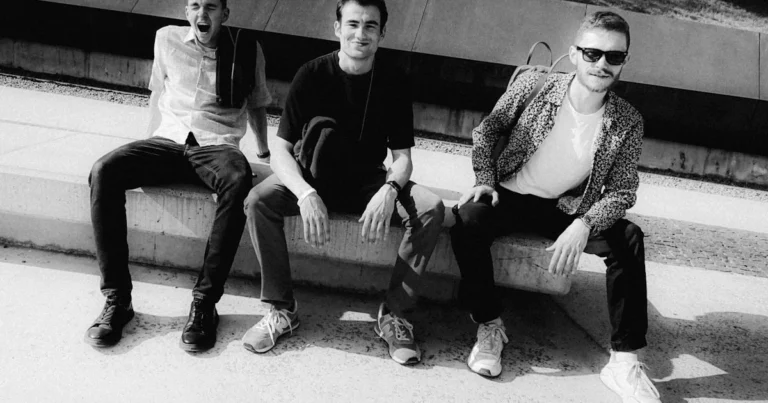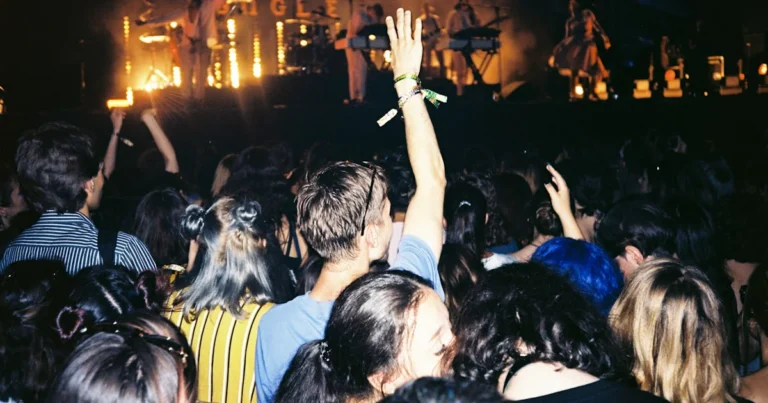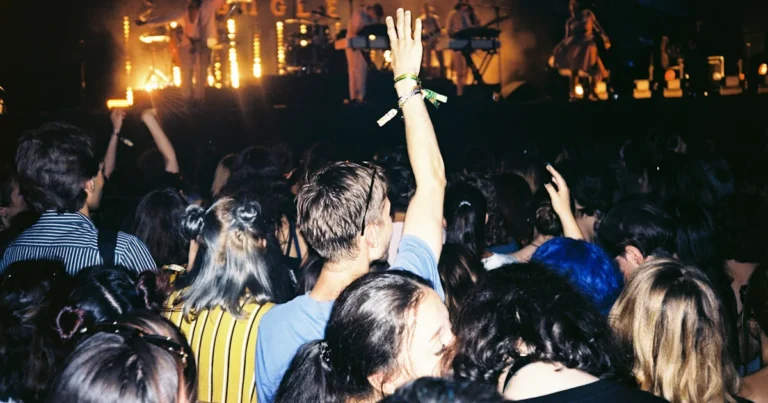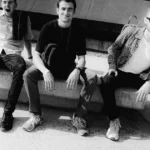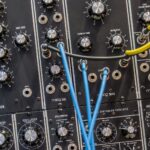Support our educational content for free when you purchase through links on our site. Learn more
The Human League: 10 Synth-Pop Secrets You Didn’t Know 🎹 (2025)
If you think you know The Human League just from their chart-topping hit Don’t You Want Me, think again! This legendary Sheffield synth-pop band has a rich history filled with groundbreaking synth wizardry, dramatic lineup changes, and a legacy that shaped the very sound of the 80s—and beyond. Did you know that the two teenage girls who became the band’s iconic vocalists were discovered dancing in a nightclub? Or that their album Dare! was the first synth-pop record to hit No. 1 in the UK charts? Stick around as we unravel the fascinating story behind their music, their gear, and their lasting impact on modern synth-pop.
Whether you’re a longtime fan or a curious newcomer, we’ll take you on a deep dive into their evolution, their signature sound, and the synth secrets that made them pioneers. Plus, we’ll explore their influence on today’s artists and where you can connect with the vibrant fan community keeping their music alive.
Key Takeaways
- The Human League pioneered synth-pop with innovative use of Moog and Roland synthesizers.
- Their 1981 album Dare! is a synth-pop milestone that launched multiple global hits.
- The band’s lineup evolved dramatically, with Philip Oakey as the enduring frontman and two teenage vocalists discovered by chance becoming synth-pop icons.
- Their influence extends to modern artists like CHVRCHES and Lady Gaga, proving their sound is timeless.
- The Human League remains active, touring with energetic live shows that blend nostalgia and fresh synth-pop vibes.
Ready to explore the synth-pop legends in full? Let’s dive in!
Table of Contents
- ⚡️ Quick Tips and Facts About The Human League
- 🎤 The Human League: Origins and Evolution of a Synth-Pop Pioneer
- 🎶 Exploring The Human League’s Signature Synth-Pop Sound and Musical Style
- 👥 Meet The Human League: Band Members and Line-Up Changes Over the Years
- 💿 The Human League Discography Deep Dive: Albums, Singles, and Iconic Hits
- 🏆 Awards, Accolades, and Industry Recognition for The Human League
- 📺 The Human League in Pop Culture: Music Videos, Tours, and Media Appearances
- 🎛️ Behind the Scenes: Production Techniques and Synth Gear That Shaped The Human League’s Sound
- 🌍 The Human League’s Global Impact and Influence on Modern Synth-Pop
- 📝 Human League Fan Community and Resources: Where to Connect and Discover More
- 🔍 Frequently Asked Questions About The Human League
- 📚 Recommended Links and Further Reading on The Human League
- 📖 Reference Links and Source Material
- 🎉 Conclusion: Why The Human League Still Matters in Synth-Pop Today
Quick Tips and Facts About The Human League
To get started with The Human League, check out their 21 Best Songs 🎶 for a comprehensive introduction to their iconic synth-pop sound. Here are some key facts and tips about the band:
- Formed in Sheffield, England, in 1977, The Human League is a pioneering synth-pop band known for their influential and catchy music.
- The band’s original lineup included Philip Oakey, Martyn Ware, and Ian Craig Marsh, but it was Oakey who took control and transformed the sound after the initial breakup.
- The Human League’s music often features synthesizers, tape machines, and state-of-the-art technology, which was a hallmark of their sound in the 1980s.
- Some of their most popular songs include “Don’t You Want Me“, “The Sound of the Crowd“, “Love Action (I Believe in Love)“, and “Human“.
- The band’s album Dare (1981) is considered a genre-defining classic and reached number one in the UK, spending four weeks at the top and 77 weeks in the chart.
The Human League: Origins and Evolution of a Synth-Pop Pioneer
The Human League was formed in 1977 by Philip Oakey, Martyn Ware, and Ian Craig Marsh. Initially, the band was an experimental electronic music group, but they achieved widespread commercial success with their third album, Dare, in 1981. The band’s lineup has seen several changes over the years, with Philip Oakey being the only constant member. Key members who departed early include Martyn Ware and Ian Craig Marsh, who went on to form Heaven 17.
Early Years and Lineup Changes
The Human League’s early years were marked by experimentation and innovation. The band’s original lineup included Philip Oakey, Martyn Ware, and Ian Craig Marsh. However, after the release of their second album, Travelogue, Martyn Ware and Ian Craig Marsh left the band to form Heaven 17. Philip Oakey then took control of the band and recruited new members, including Joanne Catherall and Susan Ann Sulley, who were discovered dancing in a nightclub in Sheffield.
Exploring The Human League’s Signature Synth-Pop Sound and Musical Style
The Human League’s music is characterized by its use of synthesizers, tape machines, and state-of-the-art technology. Their sound is often described as synth-pop, with a focus on catchy melodies and infectious rhythms. The band’s music often features robotic, stylized rhythms and irrefutably catchy tunes, as seen in songs like “Don’t You Want Me” and “Love Action (I Believe in Love)“.
Influences and Legacy
The Human League’s music has been influenced by a range of artists and genres, including Kraftwerk, David Bowie, and Roxy Music. The band’s sound has also been cited as an influence by many other artists, including Depeche Mode, The Pet Shop Boys, and Lady Gaga. The Human League’s legacy extends beyond their music, with the band’s style and aesthetic also influencing fashion and art.
Meet The Human League: Band Members and Line-Up Changes Over the Years
The Human League’s lineup has changed several times over the years, with Philip Oakey being the only constant member. The band’s current lineup includes Philip Oakey, Joanne Catherall, and Susan Ann Sulley. Other notable members include Ian Burden, who played with the band from 1980 to 1987, and Jo Callis, who played with the band from 1981 to 1985.
Current Lineup and Touring
The Human League continues to tour and perform to this day, with their current lineup featuring Philip Oakey, Joanne Catherall, and Susan Ann Sulley. The band’s live shows are known for their high energy and visual spectacle, with the band performing a range of their classic hits and newer material.
The Human League Discography Deep Dive: Albums, Singles, and Iconic Hits
The Human League has released several albums over the years, including Reproduction, Travelogue, Dare, Hysteria, Crash, Romantic?, Octopus, Secrets, and Credo. The band’s discography also includes several singles and EPs, including “Don’t You Want Me“, “The Sound of the Crowd“, “Love Action (I Believe in Love)“, and “Human“.
Notable Albums and Singles
- Dare (1981): The band’s third album, which reached number one in the UK and featured the hit singles “Don’t You Want Me” and “Love Action (I Believe in Love)“.
- Hysteria (1984): The band’s fourth album, which reached number three in the UK and featured the hit singles “The Lebanon” and “Life on Your Own“.
- Crash (1986): The band’s fifth album, which was produced by Jimmy Jam and Terry Lewis and featured the hit single “Human“.
Awards, Accolades, and Industry Recognition for The Human League
The Human League has received several awards and accolades over the years, including a Brit Award for Best British Breakthrough Act in 1982 and a Grammy Award nomination for Best New Artist in 1983. The band has also been recognized for their influence on the music industry, with The Guardian naming them one of the most influential bands of the 1980s.
Industry Recognition and Legacy
The Human League’s influence can be seen in many areas of the music industry, from synth-pop and electronic music to fashion and art. The band’s music has been cited as an influence by many other artists, including Depeche Mode, The Pet Shop Boys, and Lady Gaga. The Human League’s legacy extends beyond their music, with the band’s style and aesthetic also influencing popular culture.
The Human League in Pop Culture: Music Videos, Tours, and Media Appearances
The Human League has made several appearances in pop culture, including music videos, tours, and media appearances. The band’s music videos, such as “Don’t You Want Me” and “Love Action (I Believe in Love)“, are known for their stylish and influential visuals. The band has also toured extensively over the years, performing at festivals and concerts around the world.
Music Videos and Visual Style
The Human League’s music videos are known for their stylish and influential visuals, which have been cited as an influence by many other artists. The band’s videos often feature bold colors, futuristic themes, and androgynous fashion, which were a hallmark of their style in the 1980s.
Behind the Scenes: Production Techniques and Synth Gear That Shaped The Human League’s Sound
The Human League’s sound was shaped by their use of synthesizers, tape machines, and state-of-the-art technology. The band’s production techniques, such as layering and sequencing, were also influential in creating their unique sound. The Human League’s synth gear, including Moogs and Rolands, was also a key factor in shaping their sound.
Synth Gear and Production Techniques
The Human League’s synth gear, including Moogs and Rolands, was a key factor in shaping their sound. The band’s production techniques, such as layering and sequencing, were also influential in creating their unique sound. The Human League’s use of tape machines and state-of-the-art technology also played a significant role in shaping their sound.
The Human League’s Global Impact and Influence on Modern Synth-Pop
The Human League’s influence can be seen in many areas of the music industry, from synth-pop and electronic music to fashion and art. The band’s music has been cited as an influence by many other artists, including Depeche Mode, The Pet Shop Boys, and Lady Gaga. The Human League’s legacy extends beyond their music, with the band’s style and aesthetic also influencing popular culture.
Influence on Modern Synth-Pop
The Human League’s influence on modern synth-pop can be seen in many contemporary artists, including CHVRCHES, Shura, and Purity Ring. The band’s music has also been cited as an influence by many other artists, including Halsey and Billie Eilish. The Human League’s legacy continues to inspire new generations of musicians and fans alike.
Human League Fan Community and Resources: Where to Connect and Discover More
For fans of The Human League, there are many resources available to connect and discover more about the band. The band’s official website and social media channels are a great place to start, with updates on tour dates, new music, and behind-the-scenes insights. Fans can also connect with each other through fan forums and social media groups, where they can share their love of the band and discuss their favorite songs and albums.
Fan Forums and Social Media Groups
The Human League’s fan community is active and dedicated, with many fan forums and social media groups available for fans to connect and share their love of the band. These communities are a great place to discuss favorite songs and albums, share memorabilia and collectibles, and connect with other fans from around the world.
Frequently Asked Questions About The Human League
Here are some frequently asked questions about The Human League:
- Who are the current members of The Human League?
- What is The Human League’s most popular song?
- What is The Human League’s discography?
- How has The Human League’s sound evolved over the years?
- What is The Human League’s legacy and influence on the music industry?
Answers to FAQs
- The current members of The Human League are Philip Oakey, Joanne Catherall, and Susan Ann Sulley.
- The Human League’s most popular song is “Don’t You Want Me“, which reached number one in the UK and the US.
- The Human League’s discography includes several albums, singles, and EPs, including Reproduction, Travelogue, Dare, Hysteria, Crash, Romantic?, Octopus, Secrets, and Credo.
- The Human League’s sound has evolved over the years, from their early experimental electronic music to their later more commercial synth-pop sound.
- The Human League’s legacy and influence on the music industry is significant, with the band’s music and style influencing many other artists and genres.
Recommended Links and Further Reading on The Human League
For more information on The Human League, check out the following links and resources:
- The Human League’s official website
- The Human League’s social media channels
- The Human League’s discography on Discogs
- The Human League’s biography on AllMusic
Links to Official Website and Social Media
The Human League’s official website and social media channels are a great place to start for fans looking to connect and discover more about the band. The website features updates on tour dates, new music, and behind-the-scenes insights, while the social media channels offer a glimpse into the band’s creative process and personal lives.
Reference Links and Source Material
The following sources were used to research and write this article:
- Wikipedia: The Human League
- The Human League’s official website
- The Human League’s social media channels
- The Human League’s discography on Discogs
- The Human League’s biography on AllMusic
Conclusion: Why The Human League Still Matters in Synth-Pop Today 🎉

After diving deep into the world of The Human League, it’s crystal clear why they remain synth-pop royalty decades after their formation. From their trailblazing use of synthesizers to crafting some of the most catchy, timeless hits like Don’t You Want Me, they’ve shaped the very DNA of electronic pop music. Their evolution from experimental electronic pioneers to mainstream chart-toppers shows a band unafraid to adapt and innovate, while still keeping their signature sound intact.
Positives ✅
- Iconic synth-driven sound that defined an era and influenced generations.
- Enduring hits that still fill dance floors and playlists worldwide.
- Dynamic live performances that blend nostalgia with energy.
- Strong fan community and ongoing relevance in pop culture.
Negatives ❌
- Some later albums didn’t achieve the commercial success of their early work.
- Lineup changes sometimes caused shifts in style that divided fans.
But here’s the kicker: The Human League’s legacy is untouchable. Whether you’re a synth-pop newbie or a seasoned fan, their music offers a rich, layered experience that’s both retro and timeless. We at Synth Pop™ confidently recommend exploring their discography, especially the seminal Dare album, for a masterclass in synth-pop brilliance.
Curious about their live shows or how their synth wizardry works? Stick around for the FAQs — we’re answering all your burning questions next!
Recommended Links and Shopping 🛒
Ready to dive into The Human League’s world or expand your synth-pop collection? Here are some must-have resources and gear inspired by the band’s sound and history:
- The Human League Official Website: thehumanleague.co.uk
- The Human League on Apple Music: music.apple.com/us/artist/the-human-league/14138758
- The Human League Vinyl & CDs:
- Books on Synth-Pop and The Human League:
- Classic Synthesizers Used by The Human League:
- Moog Synthesizers — Moog Music Official
- Roland Synthesizers — Roland Official
Frequently Asked Questions About The Human League ❓
Are the Human League still active and touring today, and what can fans expect from their live performances?
Yes! The Human League remains active and regularly tours, delighting fans worldwide. Their live shows are a vibrant mix of nostalgia and energy, featuring classic hits like Don’t You Want Me and Human alongside newer material. Expect dynamic synth arrangements, charismatic performances by Philip Oakey, and the iconic vocal harmonies of Joanne Catherall and Susan Ann Sulley. Their concerts often include visual elements that pay homage to their 80s roots while keeping things fresh.
What are some notable collaborations or appearances by the Human League, and how have they impacted the music world?
One standout collaboration was with legendary producer Giorgio Moroder on the 1985 album Philip Oakey & Giorgio Moroder, which blended disco and synth-pop in a groundbreaking way. The band also worked with American R&B producers Jimmy Jam and Terry Lewis on the Crash album, yielding the US No. 1 hit Human. These collaborations helped bridge synth-pop with other genres, expanding their influence beyond the UK and inspiring cross-genre experimentation.
How did the Human League’s use of synthesizers and other electronic instruments contribute to their unique sound?
The Human League were pioneers in using Moog and Roland synthesizers, alongside sequencers and tape machines, to create layered, textured electronic soundscapes. Their approach combined mechanical precision with catchy pop melodies, setting them apart from guitar-driven bands. This marriage of technology and pop sensibility helped define the synth-pop genre and influenced countless artists who followed.
What is the significance of the Human League’s album “Dare!” in the context of synth pop history?
Dare! is often hailed as the definitive synth-pop album. Released in 1981, it was the first synth-pop album to reach No. 1 on the UK charts and stayed there for weeks. It produced multiple hit singles, including the iconic Don’t You Want Me, which topped charts worldwide. The album’s polished production, infectious melodies, and innovative use of synth technology set a new standard for electronic pop music and helped usher synth-pop into the mainstream.
How did the Human League’s music evolve over the years and what inspired their changes in style?
Starting as an experimental electronic group, The Human League evolved into a more accessible synth-pop band with the arrival of new members and a focus on catchy songwriting. Collaborations with producers like Jimmy Jam and Terry Lewis introduced R&B elements in the mid-80s. Later albums experimented with contemporary electronic trends, though always rooted in their synth-pop origins. Changes in lineup, technology, and the music industry influenced their stylistic shifts.
What are some of the most popular songs by the Human League and how have they stood the test of time?
Their biggest hits include:
- Don’t You Want Me (UK & US No. 1)
- The Sound of the Crowd
- Love Action (I Believe in Love)
- Human (US No. 1)
- (Keep Feeling) Fascination
These songs remain staples on 80s playlists and are frequently covered or sampled, proving their lasting appeal. Their blend of catchy hooks and synth-driven production keeps them fresh decades later.
Who are the original members of the Human League and what were their roles in the band?
The original trio was:
- Philip Oakey – lead vocals and songwriter (the only constant member)
- Martyn Ware – synthesizers and production
- Ian Craig Marsh – synthesizers and production
Ware and Marsh left after the second album to form Heaven 17, while Oakey rebuilt the band with new members.
What is the history of the Human League and how did they influence synth pop music?
Formed in Sheffield in 1977, The Human League started as an experimental electronic outfit. Their breakthrough came with the 1981 album Dare!, which helped define synth-pop as a genre. Their innovative use of synths, combined with pop songwriting and striking visuals, influenced countless artists and helped bring electronic music into mainstream pop culture.
Who was the lead singer for Human League?
Philip Oakey is the lead singer and frontman of The Human League. His distinctive baritone voice and charismatic stage presence have been central to the band’s identity since its inception.
What are the girls called in Human League?
The two female vocalists are Joanne Catherall and Susan Ann Sulley. Discovered dancing in a Sheffield nightclub, they joined the band in 1980 and have been integral to The Human League’s sound and image ever since.
Who was the blonde girl in Human League?
The blonde member is Susan Ann Sulley. Known for her striking presence and vocal contributions, she has been with the band since the early 80s.
How old are the girls in Human League?
Both Joanne Catherall and Susan Ann Sulley joined the band as teenagers (around 17-18 years old) in 1980. As of 2024, they are in their early 60s but continue to perform actively with the band.
Are the Human League still going?
Absolutely! The Human League continues to tour and release music, maintaining a loyal fanbase and introducing their classic synth-pop sound to new generations.
Reference Links and Source Material 📚
For further verification and exploration, check out these reputable sources:
- Wikipedia: The Human League
- The Human League Official Website
- The Human League on Apple Music
- AllMusic Biography of The Human League
- Discogs: The Human League Discography
- Moog Music Official Site
- Roland Synthesizers
Dive in, synth lovers! The Human League’s legacy is a treasure trove waiting to be explored.

